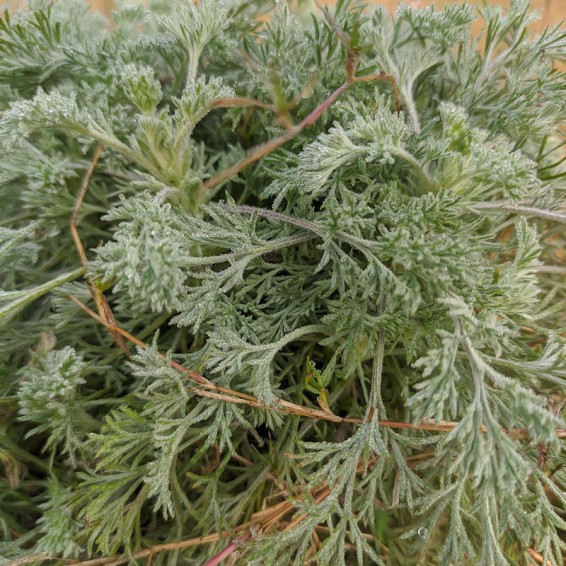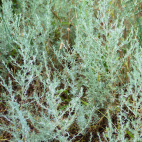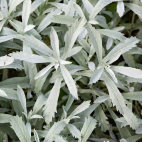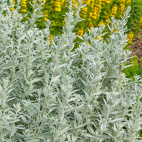Beach Wormwood Seeds
- HOW TO GROW
- FAST FACTS
- REVIEWS
HOW TO GROW
Sowing: Direct sow on the surface of the soil in late fall or early spring, and thin or transplant the seedlings to 24-36" apart. To start the seed indoors, sow on the surface of a flat; keep the soil lightly moist and at a temperature of 65-70 degrees F until germination. Transplant the seedlings as soon as they grow big enough to handle safely.
Growing: These plants thrive in full sun and dry, sandy soil. They do not need watering, since they tolerate drought well. Since this plant is a short-lived perennial, its life can be prolonged by removing the stalks as soon as they begin to flower. These plants easily reseed themselves, and can also be divided. Beach wormwood attracts bees and butterflies, especially the American Painted Lady.
Harvesting: Beach wormwood can be poisonous in large doses, and should be used with care.
Seed Saving: As soon as the round flowers begin to turn brown, the seed will develop. Shake the entire stalk over a container to remove the ripe seed; the process may have to be repeated as more seed ripens. Store the seed in a cool, dry place.
FAST FACTS
Common Names: Western Sagebrush, Field Sagewort, Wild Wormwood, Threadleaf Sagewort
Latin Name: Artemisia caudata
Species Origin: US Native Wildflower
Type: Native Wildflowers
Life Cycle: Perennial
USDA Zones: 2, 3, 4, 5, 6, 7, 8, 9, 10
US Regions: Mountain, Arid/Desert, Plains/Texas, Midwest, Northern, Northeast, Southeast
Seeds per Ounce: 250,000
Stratification: No Stratification
Germination Ease: No Stratification
Sunlight: Full Sun, Part Sun
Height: 36 Inches
Color: Green
Bloom Season: Blooms Late Summer, Blooms Early Fall, Blooms Late Fall
Fast shipping
Seeds were delivered quickly and well packaged. Can't wait to watch them grow
Perfect!
Hard to find seeds at a good price, great shipping time, love the packaging!
DESCRIPTION
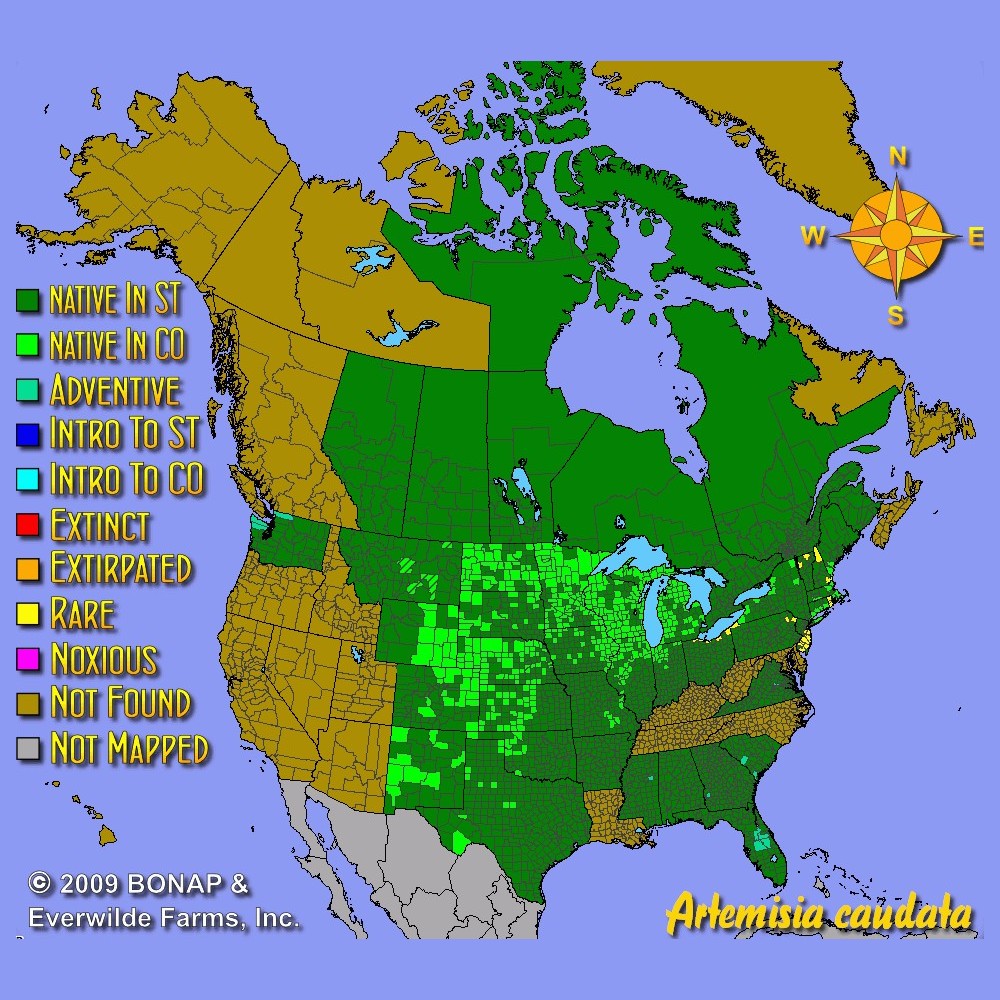
HOW TO GROW
Sowing: Direct sow on the surface of the soil in late fall or early spring, and thin or transplant the seedlings to 24-36" apart. To start the seed indoors, sow on the surface of a flat; keep the soil lightly moist and at a temperature of 65-70 degrees F until germination. Transplant the seedlings as soon as they grow big enough to handle safely.
Growing: These plants thrive in full sun and dry, sandy soil. They do not need watering, since they tolerate drought well. Since this plant is a short-lived perennial, its life can be prolonged by removing the stalks as soon as they begin to flower. These plants easily reseed themselves, and can also be divided. Beach wormwood attracts bees and butterflies, especially the American Painted Lady.
Harvesting: Beach wormwood can be poisonous in large doses, and should be used with care.
Seed Saving: As soon as the round flowers begin to turn brown, the seed will develop. Shake the entire stalk over a container to remove the ripe seed; the process may have to be repeated as more seed ripens. Store the seed in a cool, dry place.
FAST FACTS
Common Names: Western Sagebrush, Field Sagewort, Wild Wormwood, Threadleaf Sagewort
Latin Name: Artemisia caudata
Species Origin: US Native Wildflower
Type: Native Wildflowers
Life Cycle: Perennial
USDA Zones: 2, 3, 4, 5, 6, 7, 8, 9, 10
US Regions: Mountain, Arid/Desert, Plains/Texas, Midwest, Northern, Northeast, Southeast
Seeds per Ounce: 250,000
Stratification: No Stratification
Germination Ease: No Stratification
Sunlight: Full Sun, Part Sun
Height: 36 Inches
Color: Green
Bloom Season: Blooms Late Summer, Blooms Early Fall, Blooms Late Fall
Reviews
Review
Fast shipping
Seeds were delivered quickly and well packaged. Can't wait to watch them grow
Review
Perfect!
Hard to find seeds at a good price, great shipping time, love the packaging!
Also Consider These:
-
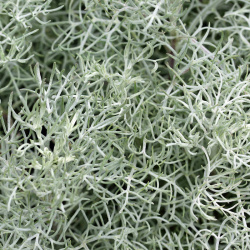 Out Of Stock
Fringed Sage Seeds
Artemisia frigida
This hardy plant of the western plains provides excellent ground cover and erosion control for poor soil. In addition, its silvery foliage lends striking beauty to the landscape.Quick Viewx
Out Of Stock
Fringed Sage Seeds
Artemisia frigida
This hardy plant of the western plains provides excellent ground cover and erosion control for poor soil. In addition, its silvery foliage lends striking beauty to the landscape.Quick ViewxFringed Sage Seeds
Artemisia frigida
This hardy plant of the western plains provides excellent ground cover and erosion control for poor soil. In addition, its silvery foliage lends striking beauty to the landscape.
$2.98 Pkt - $9.88 / Oz -
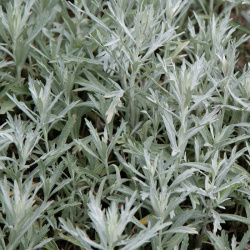 Prairie Sage Seeds
Artemisia ludoviciana
This attractive plant will fill the air with a spicy scent. The silvery foliage stands out in beautiful contrast in native plantings, as well as being a carefree, bushy ground cover.Quick View$3.75 Pkt - $28.00 / Oz
Prairie Sage Seeds
Artemisia ludoviciana
This attractive plant will fill the air with a spicy scent. The silvery foliage stands out in beautiful contrast in native plantings, as well as being a carefree, bushy ground cover.Quick View$3.75 Pkt - $28.00 / Oz



